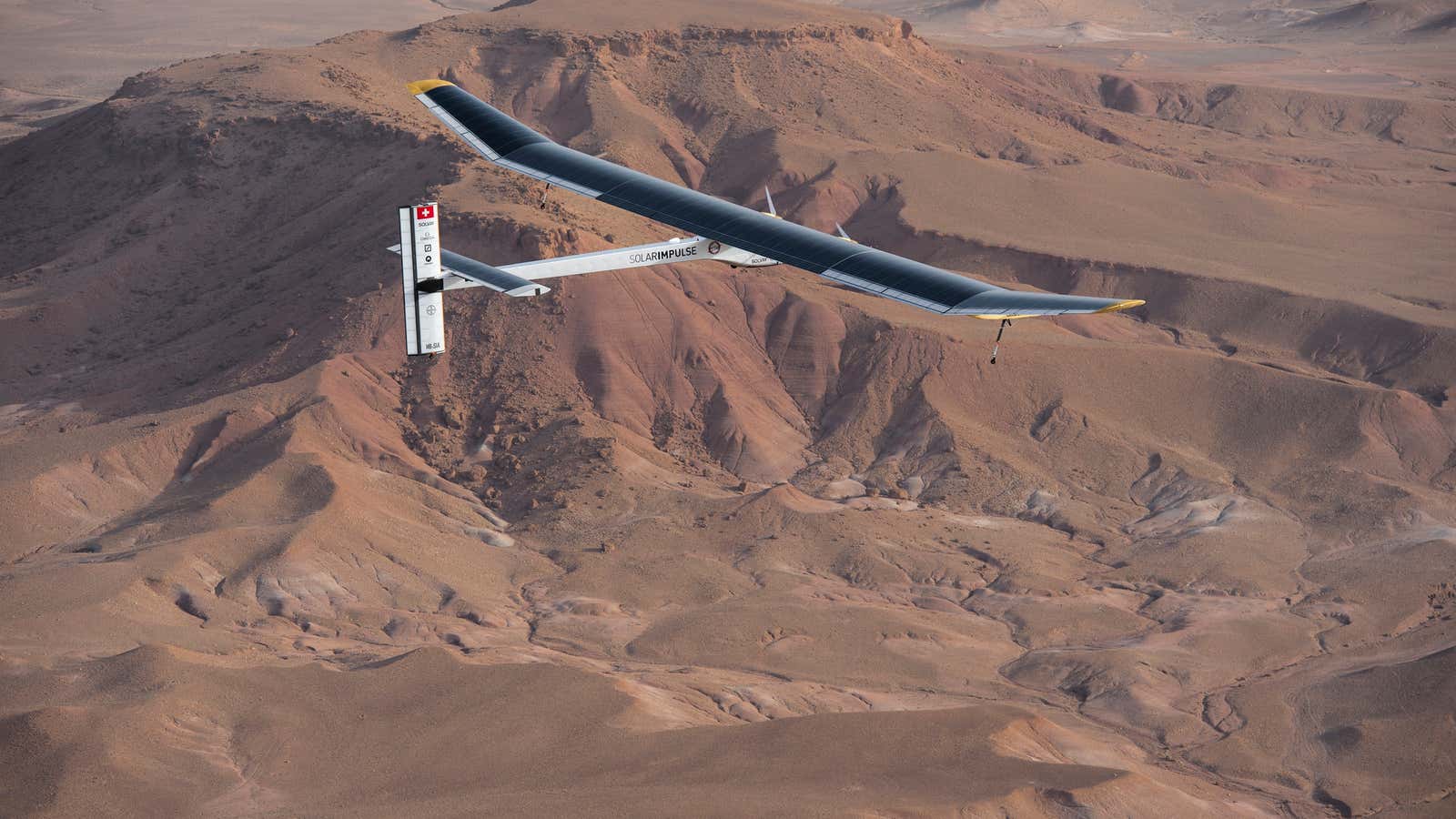This could give OPEC ministers some nightmares: On May 1, a plane is set to take off from Silicon Valley and fly to New York without using a drop of fuel, powered solely by some 2,000-square feet of solar cells covering its wings.
But don’t book your ticket just yet.
Called the Solar Impulse, the 3,527-pound (1,600 kilogram) plane with the wingspan of a 747 jetliner will carry a single pilot. The solar cells made by SunPower, each the thickness of a human hair, will supply up to 45 kilowatts of electricity to power four propellers. Battery packs store the electricity to allow the Impulse to fly at night.
“The wingspread has to be tremendously big and the weight has to be tremendously light in order to be able to go day and night,” Bertrand Piccard, a Swiss adventurer, pilot, and co-founder of Solar Impulse, said during a press conference today at NASA’s Moffett Field in Mountain View, California. “In that sense, maybe it’s not the easiest way to fly, but it’s the most fabulous way to fly because the more you fly, the more energy you have onboard.”
Last year, Piccard (insert your Star Trek joke here) and co-founder André Borschberg flew the Solar Impulse on a 3,728-mile (6,000 kilometer) journey from Europe to northern Africa and back. The US transcontinental trip is a prelude to an around-the-world flight in a next-generation Impulse that is planned for 2015.
(The Solar Impulse flew from Switzerland to the US the old-school way: in the belly of a cargo plane after being disassembled.)
The current itinerary has the Solar Impulse flying from Moffett Field to Phoenix and then on to Dallas. The next stop will be St. Louis, Nashville, or Atlanta before Washington, DC, and then New York, where it’s expected to complete the journey in early July.
“We’re going to show that the idea that renewable energy can’t fuel the world is wrong,” said Tom Werner, chief executive of Silicon Valley-based SunPower as he stood before the reassembled Solar Impulse in a Moffett Field hangar.
The US flight is designed to be more inspirational than a prelude to solar-powered commercial flight. But the use of lightweight carbon materials, solar cells, and lithium-ion batteries—hello, Boeing—could influence future aeronautical development.
But will solar ever become a mainstream aviation technology?
“It would be crazy to answer yes and stupid to answer no,” Piccard said at the press conference. “Today we couldn’t have a solar-powered plane with 200 passengers. Maybe one day.”
